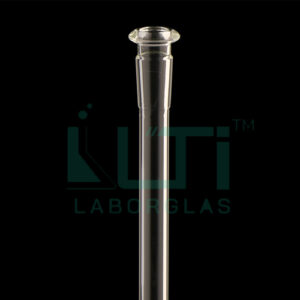- With Double Metric Scale, TC (To Contain)
- Cylinders are made to meet ASTM E 1272 norms
- Printed in amber enamel
- With batch certificate
| PART No. | Capacity (ml) | SUB DIVISION (ml) | ±Tol.(ml) | Pack QTY |
| 3860-5 | 5 | 0.1 | 0.5 | 2 |
| 3860-10 | 10 | 0.1 | 0.1 | 2 |
| 3860-25 | 25 | 0.2 | 0.17 | 2 |
| 3860-50 | 50 | 1 | 0.25 | 2 |
| 3860-100 | 100 | 1 | 0.5 | 2 |
| 3860-250 | 250 | 2 | 1 | 2 |
| 3860-500 | 500 | 5 | 2 | 2 |
| 3860-1000 | 1000 | 10 | 3 | 2 |
| 3860-2000 | 2000 | 20 | 6 | 2 |
Here are some common applications for such a mixing cylinder:
- Volumetric Mixing: The mixing cylinder is used for the accurate and precise mixing of liquid components in specific ratios, crucial in various laboratory applications such as chemical synthesis, titrations, or quality control procedures.
- Analytical Chemistry: In analytical chemistry laboratories, this type of mixing cylinder is employed for preparing standard solutions or reagents with accurate concentrations needed for analytical methods and procedures.
- Quality Control: Industries, particularly pharmaceuticals and chemicals, use mixing cylinders for routine quality control processes, where precise mixing is necessary to ensure product consistency and compliance with standards.
- Sample Dilution: Laboratories use mixing cylinders for diluting samples accurately, especially in applications where maintaining a specific concentration is crucial, such as in environmental analysis.
- Chemical Reactions: The mixing cylinder can be utilized in controlled chemical reactions where precise mixing is essential for achieving the desired outcomes in research or manufacturing processes.
- Titration Procedures: Mixing cylinders are valuable in titration experiments for preparing solutions with accurate concentrations, ensuring the reliability of titration results.
- Educational Purposes: Mixing cylinders are commonly used in educational settings for teaching students about liquid measurements, mixing techniques, and the importance of precision in laboratory work.
- Research and Development: In research and development laboratories, the mixing cylinder is useful for developing new processes, methods, or formulations that require precise liquid mixing.
- Pharmaceutical Formulations: In pharmaceutical laboratories, mixing cylinders are utilized for preparing formulations with precise concentrations of active ingredients and other components.
- Environmental Analysis: Laboratories involved in environmental analysis may use mixing cylinders for preparing standard solutions or reagents with accurate concentrations for water quality testing or pollution monitoring.
- Hexagonal Base Stability: The hexagonal base design provides stability during mixing, minimizing the risk of accidental spills or tipping over, which is crucial in applications requiring accuracy.
- Industrial Applications: In certain industrial processes where moderate precision is acceptable, mixing cylinders with a hexagonal base may be used for routine mixing tasks or quality checks.





